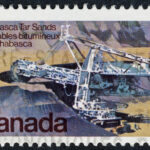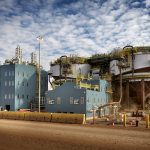Siren Fisekci, Vice President of Investor and Corporate Relations, and Philip Birkby, Treasurer, of Canadian Oil Sands Limited (TSX: COS), presented today at EnerCom’s The Oil & Gas Conference® 20.
Canadian Oil Sands holds a 36.74% interest in the Syncrude project, the largest producer of light, sweet synthetic oil from Canada’s oil sands. As a pure play in Syncrude, Canadian Oil Sands provides investors with long-life, light crude oil exposure and since 2001 has paid dividends totaling $7.8 billion.
During the company’s breakout session, management was asked the following questions:
- In terms of total costs, which of your costs would flex up if oil prices increased?
- At what oil price threshold would your taxes increase?
- Other than taxes and royalties, would any of your costs change with an oil price increase?
- How should we think about the price per barrel you receive compared to WTI?
- Would that discount to WTI change significantly with a change in WTI prices?
- What are your plans in terms of production growth and capital growth?
- What will annual CAPEX look like?
- Will COS be affected by the provincial royalty review?
- Is there room to move upgrading costs down if oil prices remain lower, longer?
- Can you tell us how ExxonMobil’s personnel fit into upper management?
- How is ExxonMobil using its expertise with refineries at your upgrader?
- How have natural gas prices affected your operating costs?
- Do you expect any changes to your borrowing base?
- What’s the long-term philosophy on dividends?
- What made COS tap so much of its credit in Q1’15?
- Have you thought about how you will stay afloat if low prices persist?
- Is there any more room to bring down maintenance CAPEX?
- Could you talk about how you can access more international markets?
- How are Canadian companies staying in business without upgrading their production?
- What does it cost you to upgrade your oil on a BOE basis?
- Could you explain some of the benefits between mining and SAGD?
- What do your costs associated with environmental regulations look like?







